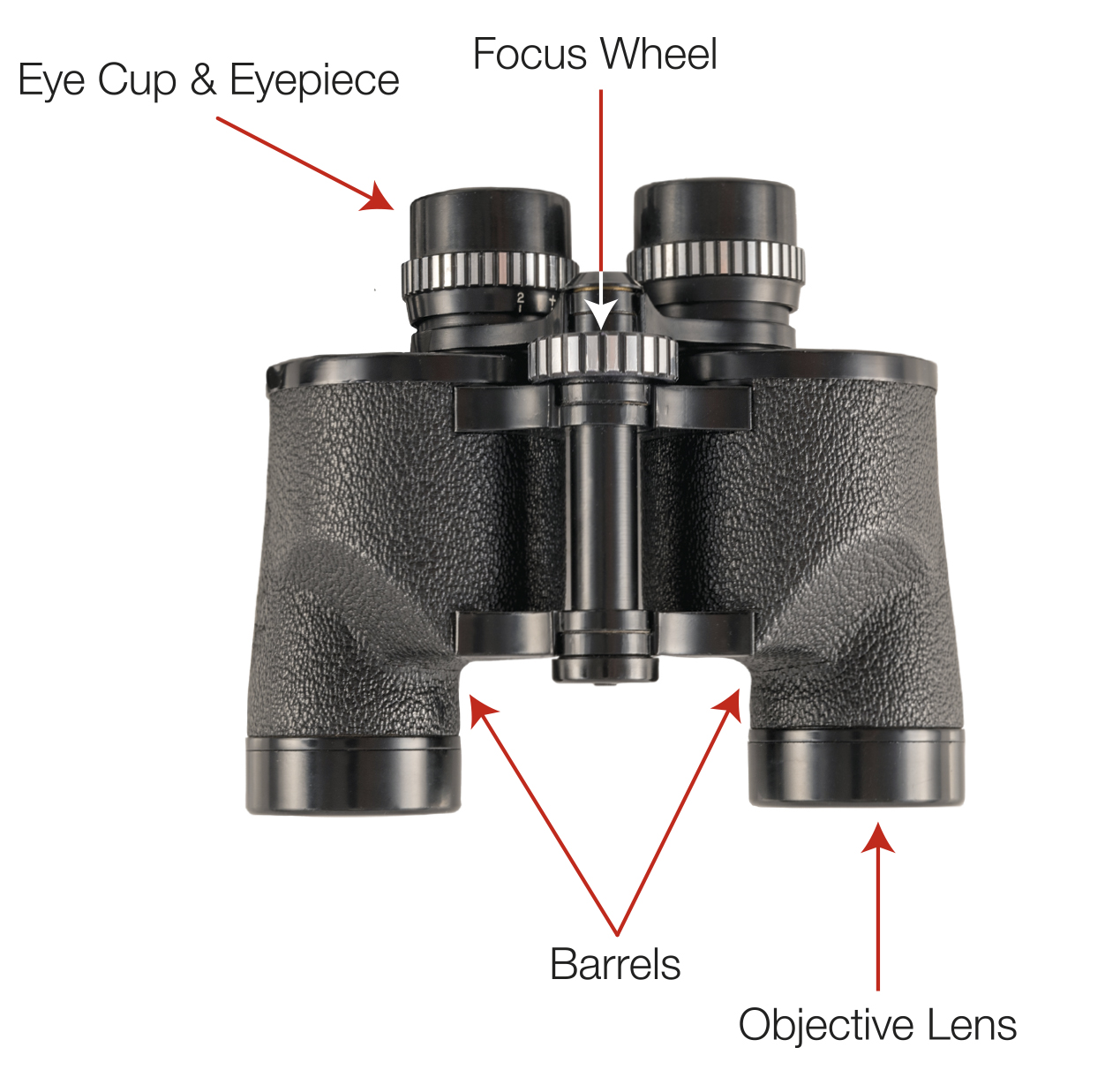Equipment
Binoculars
- Good binoculars should have numbers on them like 8×36 or 10×42.
The first number is the magnification and the second number is the diameter of the larger (objective) lens and indicates how big your field of view is. The larger your field of view, the easier it is to find what you’re looking for. You don’t need to spend lots of money on a new pair of binoculars; check out Audubon’s guide to the best binoculars at every price level. You can also purchase binoculars from the Fish and Wildlife Foundation of Florida.
Spotting Scope
- Spotting scopes require a tripod. They often give much better
magnification than binoculars but are not quite as portable. If you’re unsure which spotting scope to purchase, check out Audubon’s guide to spotting scopes.
Field Guide
- Field guides help you identify birds.
- They can be books or smartphone apps.
- Get familiar with their organization before you try to use them so that you don’t have to flip through the whole book for each bird you see.
- For a photo-based guide, try the Crossley ID Guide by Richard Crossley. For illustration-based guides, try the Peterson Field Guide to Birds of Eastern and Central North America, National Geographic Field Guide to the Birds of North America, the Kaufman Field Guide to Birds of North America by Kenn Kaufman, or the Sibley Field Guide to Birds by David Allen Sibley.
- Smartphone apps can be really useful. Try Merlin by the Cornell Lab or iBird by the Mitch Waite Group. Ask your friends what they’re using and how they like it. There are many apps and, like field guides, they all have their strengths and weaknesses.
Checklist
- Keep track of what birds you’ve seen with notes, a checklist and/or eBird.
- Download and print a checklist of Florida’s birds here.
- Check the Florida Ornithological Society website for more information
on checklists.

Tips
- Practice using binoculars on a sign or something else that doesn’t move.
- If you have kids who interested in joining you when it comes to bird watching, you might be interested in checking out these kids binoculars here so that they can join in the fun with you.
- Find your bird with your eyes first, then move the binoculars up to look
through them. - Get started in your backyard where you can see the same birds day
after day and learn them. - Bird around your neighborhood, in parks and around water.
- Check out Birdwatching Basics, our introduction for beginning birders for more tips. View or download here. Also available in Spanish here.
- Subscribe to our monthly newsletter KITE TALES – great information on birding in Florida
- Use eBird to help you find the species you need.
- Go birding with experienced birders. Go to a birding festival and bird with the experts or join a local Audubon field trip.